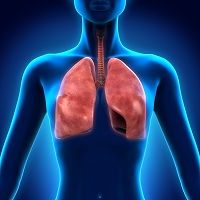Pulmonary Rehabilitation Programs Should Reach More Patients
Pulmonary rehabilitation programs could help more patients with respiratory conditions like severe asthma and chronic obstructive pulmonary disease (COPD), but they are not used widely enough.

Pulmonary rehabilitation programs could help more patients with respiratory conditions like severe asthma and chronic obstructive pulmonary disease (COPD), but they are not used widely enough, according to findings published in the Journal of Cardiopulmonary Rehabilitation and Prevention.
Researchers from the University of Texas Medical Branch at Galveston examined the medical records of Medicare beneficiaries with COPD in order to determine the national trends and factors related to the use of pulmonary rehabilitation. The researchers studied more than 33,000 patients with claims submitted between 2003 and 2012. They noted that this was the first study of its kind to examine pulmonary rehabilitation among COPD patients in a large, nationally representative sample of nationwide patients.
“The majority of the economic burden of caring for COPD stems from hospitalization for sudden COPD flare ups,” researcher Shawn Nishi, assistant professor in the Internal Medicine Division of Pulmonary, Critical Care and Sleep Medicine, said in a press release. “As pulmonary rehabilitation is known to reduce COPD-related emergency room visits, hospitalizations and unscheduled doctor visits, pulmonary rehabilitation provides an overall cost effective management for a health care system.”
The researchers found that patients were more likely to receive pulmonary rehabilitation if they were younger, were of non Hispanic white race, were of higher socioeconomic status, were found to have multiple health issues and were evaluated by a pulmonary physician. The biggest increases in the use of pulmonary rehabilitation were among COPD patients aged greater than 75 years, males, people of black race, people with other health issues and people of higher socioeconomic status.
“Starting in 2015, the Centers for Medicare and Medicaid Services added COPD to the list of conditions subject to penalties for readmissions to the hospital within 30 days after release,” Nishi added. “As the health care system shifts from volume- to value based reimbursement from Centers for Medicare and Medicaid Services, it is prudent for health systems to offer hospital- or community-based pulmonary rehabilitation services to its patients with COPD.”
The researchers also noted that pulmonary rehabilitation offers a comprehensive approach designed to relieve patients’ COPD symptoms and flare ups, in addition to teaching patients to manage their health beyond the duration of the program. The benefits of pulmonary rehabilitation programs for patients, they said, are reduced shortness of breath, increased exercise abilities, improved health related quality of life and less dependence on health care resources.